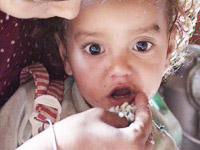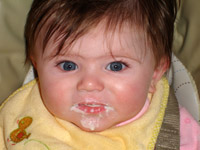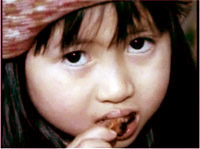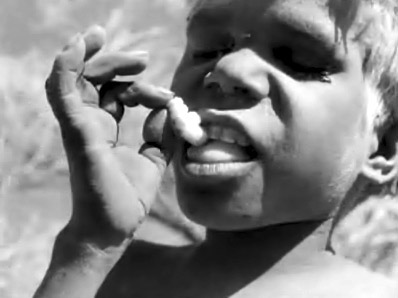|
Anthropology in the News
|
|
||||||||||||||||||||||||||||||||||
 "Palermo,Sicily Italy |
 A Fistfull of Rice Nepal |
 Claire Kathleen Roufs U.S.A. |
 "Eating Rat At The New Year" Vietnam National Geographic |
 Desert People Australia |
|
Texts and Other Class Material |
|
to see details (below) click on text image(s)
|
|||||||||||||||||||||||||
|
Gillian Crowther. From the Publisher From ingredients and recipes to meals and menus across time and space, this highly engaging overview illustrates the important roles that anthropology and anthropologists play in understanding food and its key place in the study of culture. The new edition, now in full colour, introduces discussions about nomadism, commercializing food, food security, and ethical consumption, including treatment of animals and the long-term environmental and health consequences of meat consumption. New feature boxes offer case studies and exercises to help highlight anthropological methods and approaches, and each chapter includes a further reading section. By considering the concept of cuisine and public discourse, Eating Culture brings order and insight to our changing relationship with food. Humans have an appetite for food, and anthropology—as the study of human beings, their culture, and society—has an interest in the role of food. From ingredients and recipes to meals and menus across time and space, Eating Culture is a highly engaging overview that illustrates the important role that anthropology and anthropologists have played in understanding food. Organized around the sometimes elusive concept of cuisine and the public discourse—on gastronomy, nutrition, sustainability, and culinary skills—that surrounds it, this practical guide to anthropological method and theory brings order and insight to our changing relationship with food. ReviewAt last, a text for teaching the anthropology of food. Eating Culture is a wonderful introduction to cultural anthropology through the lens of food. From hunting and gathering to the global supply chain, this book offers an engaging entrée into thinking about food from a variety of cultural perspectives while introducing key concepts in cultural anthropology and food studies. (Rachel E. Black, Boston University) In anthropology, we study food in order to better understand societies and cultures. Eating Culture provides an expansive, thorough, and very readable explanation of how we do that and of what we have so far understood. Using examples from all over the world, Crowther's text relies on both classic ethnographies and a nearly comprehensive survey of recent anthropological research on food. Eating Culture will be a welcome addition to undergraduate courses in food and culture. (David I. Beriss, University of New Orleans) About the Author |
|||||||||||||||||||||||||||||||||||||||||||||||||||||||||||||||||||||
|
|
The Omnivore's Dilemma: A Natural History of Four Meals,
Other on-line and brick and mortar stores should have comparable offers. Michael Pollan. From Barnes & NobleIn the ancient days of hunter-gatherers, a wrong food choice -- in the form of a poison mushroom or toxic root -- could have quick and fatal consequences. Today, according to Botany of Desire author Michael Pollan, we face comparable dangers in the midst of plenitude. Pollan notes that Fast-Food America is experiencing what can only be described as a national eating disorder. With compelling precision, he describes how parallel food chains (industrialized food, alternative or "organic" food, and home-gathered food) reflect differences and similarities in our ecology of eating. A fascinating look behind the labels. From the PublisherA New York Times bestseller that has changed the way readers view the ecology of eating, this revolutionary book by award winner Michael Pollan asks the seemingly simple question: What should we have for dinner? Tracing from source to table each of the food chains that sustain us - whether industrial or organic, alternative or processed - he develops a portrait of the American way of eating. The result is a sweeping, surprising exploration of the hungers that have shaped our evolution, and of the profound implications our food choices have for the health of our species and the future of our planet. The New York Times Book ReviewThoughtful, engrossing ... You're not likely to get a better explanation of exactly where your food comes from. Publishers WeeklyPollan (The Botany of Desire) examines what he calls "our national eating disorder" (the Atkins craze, the precipitous rise in obesity) in this remarkably clearheaded book. It's a fascinating journey up and down the food chain, one that might change the way you read the label on a frozen dinner, dig into a steak or decide whether to buy organic eggs. You'll certainly never look at a Chicken McNugget the same way again. Pollan approaches his mission not as an activist but as a naturalist: "The way we eat represents our most profound engagement with the natural world." All food, he points out, originates with plants, animals and fungi. "[E]ven the deathless Twinkie is constructed out of... well, precisely what I don't know offhand, but ultimately some sort of formerly living creature, i.e., a species. We haven't yet begun to synthesize our foods from petroleum, at least not directly." Pollan's narrative strategy is simple: he traces four meals back to their ur-species. He starts with a McDonald's lunch, which he and his family gobble up in their car. Surprise: the origin of this meal is a cornfield in Iowa. Corn feeds the steer that turns into the burgers, becomes the oil that cooks the fries and the syrup that sweetens the shakes and the sodas, and makes up 13 of the 38 ingredients (yikes) in the Chicken McNuggets. Indeed, one of the many eye-openers in the book is the prevalence of corn in the American diet; of the 45,000 items in a supermarket, more than a quarter contain corn. Pollan meditates on the freakishly protean nature of the corn plant and looks at how the food industry has exploited it, to the detriment of everyone from farmers to fat-and-getting-fatter Americans. Besides Stephen King, few other writers have made a corn field seem so sinister. Later, Pollan prepares a dinner with items from Whole Foods, investigating the flaws in the world of "big organic"; cooks a meal with ingredients from a small, utopian Virginia farm; and assembles a feast from things he's foraged and hunted. This may sound earnest, but Pollan isn't preachy: he's too thoughtful a writer, and too dogged a researcher, to let ideology take over. He's also funny and adventurous. He bounces around on an old International Harvester tractor, gets down on his belly to examine a pasture from a cow's-eye view, shoots a wild pig and otherwise throws himself into the making of his meals. I'm not convinced I'd want to go hunting with Pollan, but I'm sure I'd enjoy having dinner with him. Just as long as we could eat at a table, not in a Toyota. (Apr.) Pamela Kaufman is executive editor at Food & Wine magazine. Copyright 2006 Reed Business Information. Library JournalPollan (journalism, Univ. of California, Berkeley; The Botany of Desire: A Plant's-Eye View of the World) defines the Omnivore's Dilemma as the confusing maze of choices facing Americans trying to eat healthfully in a society that he calls "notably unhealthy." He seeks answers to this dilemma by taking readers through the industrial, organic, and hunter-gatherer stages of the food chain. Focusing on corn as the keystone plant in the industrial stage, Pollan describes its role in feeding cattle and in food processing as well as its ultimate destination in the products we consume at fast-food restaurants. The organic, or pastoral, stage offers a pure and chemical-free eating environment for animals and humans. In the hunter-gatherer stage, omnivores hunt animals and gather the plant foods that comprise all or part of their diets. Pollan explains how a framework of environmental, biological, and cultural factors determines what and how we eat. Although a bit long and sometimes redundant, this folksy narrative provides a wealth of information about agriculture, the natural world, and human desires. Recommended for all omnivores. [See Prepub Alert, LJ 12/05.]-Irwin Weintraub, Brooklyn Coll. Lib., New York Copyright 2006 Reed Business Informatio Kirkus ReviewsThe dilemma-what to have for dinner when you are a creature with an open-ended appetite-leads Pollan (Journalism/Berkeley; The Botany of Desire, 2001, etc.) to a fascinating examination of the myriad connections along the principal food chains that lead from earth to dinner table. The author identifies three: the one controlled by agribusiness; the pastoral, organic industry that has sprung up as an alternative to it; and the very short food chain Pollan calls "neo-Paleolithic," in which he assumes the role of modern-day hunter-gatherer. He demonstrates the dependence of the agribusiness system on a single grain, corn, as it passes from farm to feedlot and processing plant. The meal that concludes this section is takeout from McDonald's and includes among other foods a serving of Chicken McNuggets. Of the 38 ingredients that make up McNuggets, 13, he notes, are derived from corn. This fact bolsters an earlier, startling statistic: Each of us is personally responsible for consuming a ton of corn each year. Pollan's exploration of the pastoral food chain takes two roads. Investigating "industrial organic," he assembles a meal composed entirely of ingredients from a Whole Foods supermarket. But he also visits a single, relatively small farm in Virginia's Shenandoah Valley, where grass, not corn, is the basis of production, and cattle, chickens and pigs are raised through management of the natural ecosystem. Pollan joins in the farm work and is clearly impressed by what he learns, observes and eats here. In the final section, he learns how to shoot a wild pig and how to scavenge for forest mushrooms. The author's extraordinarily labor-intensive final meal provides a perfect contrast to thefast-food takeout of Part I. Pollan combines ecology, biology, history and anthropology with personal experience to present fascinating multiple perspectives. Revelations about how the way we eat affects the world we live in, presented with wit and elegance. |
|||||||||||||||||||||||||||||||||||||||||||||||||||||||||||||||||||||
Dan Jurafsky is the recipient of a MacArthur "Genius Grant" and a professor of linguistics at Stanford University. He and his wife live in San Francisco.
RELATED TO THIS BOOK Meet Daniel Jurafsky Interesting Throughout
Does This Name Make Me Sound High-Fat?
|
Dan Jurafsky. From the Publisher Stanford University linguist and MacArthur Fellow Dan Jurafsky dives into the hidden history of food. Why do we eat toast for breakfast, and then toast to good health at dinner? What does the turkey we eat on Thanksgiving have to do with the country on the eastern Mediterranean? Can you figure out how much your dinner will cost by counting the words on the menu? In The Language of Food, Stanford University professor and MacArthur Fellow Dan Jurafsky peels away the mysteries from the foods we think we know. Thirteen chapters evoke the joy and discovery of reading a menu dotted with the sharp-eyed annotations of a linguist. Jurafsky points out the subtle meanings hidden in filler words like "rich" and "crispy," zeroes in on the metaphors and storytelling tropes we rely on in restaurant reviews, and charts a microuniverse of marketing language on the back of a bag of potato chips. The fascinating journey through The Language of Food uncovers a global atlas of culinary influences. With Jurafsky's insight, words like ketchup, macaron, and even salad become living fossils that contain the patterns of early global exploration that predate our modern fusion-filled world. From ancient recipes preserved in Sumerian song lyrics to colonial shipping routes that first connected East and West, Jurafsky paints a vibrant portrait of how our foods developed. A surprising history of culinary exchange—a sharing of ideas and culture as much as ingredients and flavors—lies just beneath the surface of our daily snacks, soups, and suppers. Engaging and informed, Jurafsky's unique study illuminates an extraordinary network of language, history, and food. The menu is yours to enjoy. Endorsements & Reviews“Ever since I heard the phrase 'fresh frozen' I have been wondering about food language. Now Dan Jurafsky has taken on the subject with scholarship, wit, and charm, making The Language of Food a very engaging book.” — Mark Kurlansky, author of Cod “Writing with knowledge and wit, Dan Jurafsky shows that the language of food reflects our desires and aspirations, whether it’s on a fancy French menu or a bag of potato chips.” — Bee Wilson, author of Consider the Fork: A History of How We Cook and Eat “The Language of Food is excellent, a fascinating read from beginning to end. From pastas to pastries, you can't resist Dan Jurafsky's insights into what we say about food.” — Tyler Cowen, professor of economics, George Mason University, and author of Average is Over “Dan Jurafksy hits the sweet spot of intellectual rigor and spoon-common interest in The Language of Food. Whether quoting from a menu item, "Dirty Girl Romano beans," or decoding the food vortex of Portlandia, Dan makes your tongue drop. The chapters on sherbet, toast, and potato chip packaging are too delicious—you'll be scanning the supermarket as Dan's new protégé. Two thumbs up, multiple hearts, five stars, and beaucoup butterflies!” — Susie Bright “Mix equal parts fascinating history, surprising etymology, and brilliant linguistic analysis, add a generous dollop of humor, and savor The Language of Food. You'll never think of ketchup, French fries, fish and chips, or toast in the same way” — Deborah Tannen, author of the #1 bestseller You Just Don’t Understand: Women and Men in Conversation “Delightful. The distinguished linguist Dan Jurafsky brings a battery of skills to reveal the far-flung links of many of our dishes, to reveal how potato chip advertisements work, and to give an insider’s guide to reading menus. I couldn’t put this book down.” — Rachel Laudan, author of Cuisine and Empire: Cooking in World History “Why is the entrée served in the middle of the meal instead of when you 'enter' it? Why would anybody put a feather in their hat and call it macaroni? The Language of Food answers these questions and teaches so much more about a vast wing of our everyday vocabulary that we so seldom stop to think about.” — John McWhorter, Associate Professor of linguistics at Columbia University, contributing editor for The New Republic, and Time magazine columnist |
|||||||||||||||||||||||||||||||||||||||||||||||||||||||||||||||||||||
|
The following chapters and classical articles are available on-line
|
|
 Page URL: http:// www.d.umn.edu /cla/faculty/troufs/anthfood/aftexts.html Site Information |
||
View Stats |
|